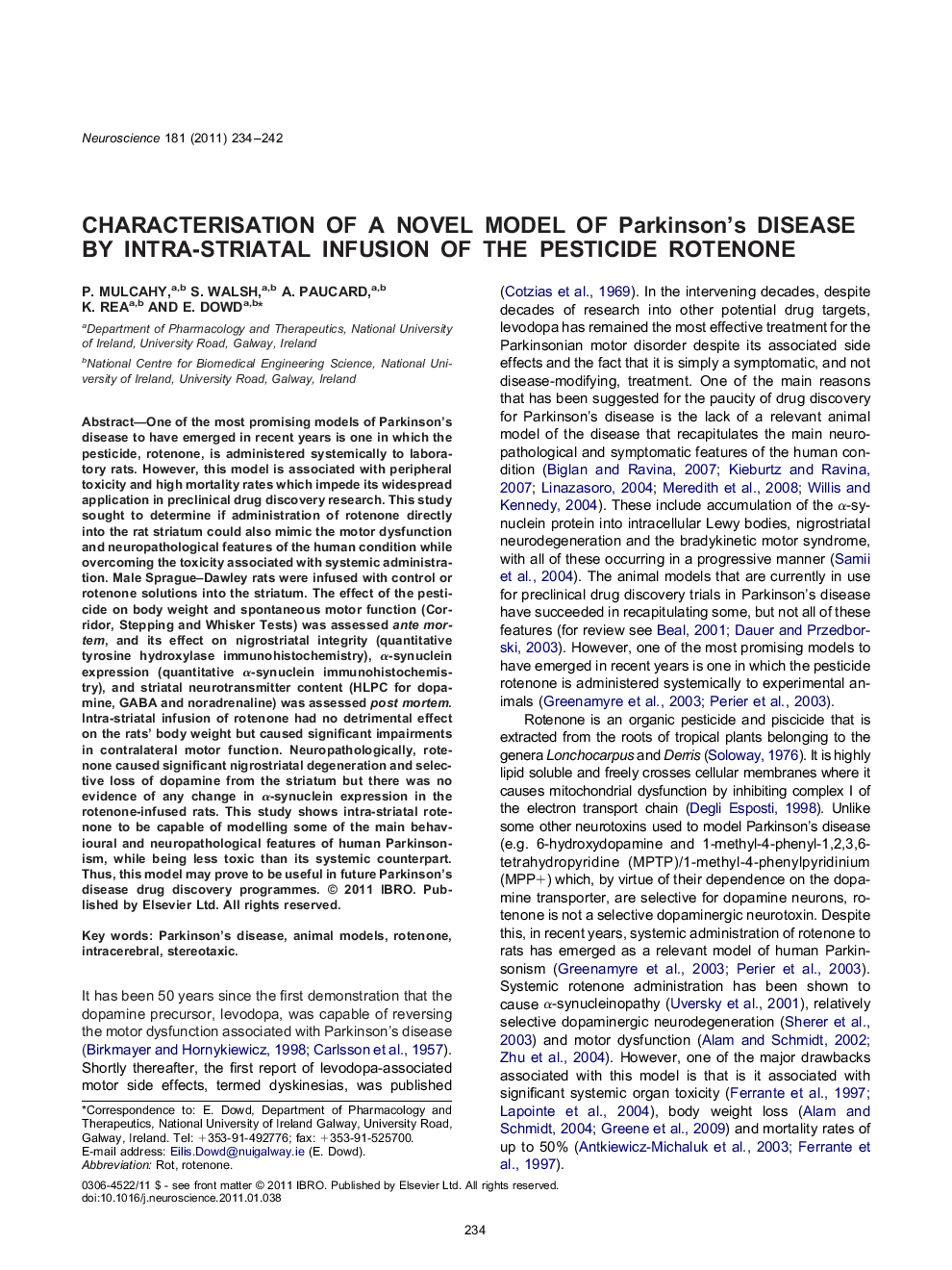| Article ID | Journal | Published Year | Pages | File Type |
|---|---|---|---|---|
| 4338926 | Neuroscience | 2011 | 9 Pages |
One of the most promising models of Parkinson's disease to have emerged in recent years is one in which the pesticide, rotenone, is administered systemically to laboratory rats. However, this model is associated with peripheral toxicity and high mortality rates which impede its widespread application in preclinical drug discovery research. This study sought to determine if administration of rotenone directly into the rat striatum could also mimic the motor dysfunction and neuropathological features of the human condition while overcoming the toxicity associated with systemic administration. Male Sprague–Dawley rats were infused with control or rotenone solutions into the striatum. The effect of the pesticide on body weight and spontaneous motor function (Corridor, Stepping and Whisker Tests) was assessed ante mortem, and its effect on nigrostriatal integrity (quantitative tyrosine hydroxylase immunohistochemistry), α-synuclein expression (quantitative α-synuclein immunohistochemistry), and striatal neurotransmitter content (HLPC for dopamine, GABA and noradrenaline) was assessed post mortem. Intra-striatal infusion of rotenone had no detrimental effect on the rats' body weight but caused significant impairments in contralateral motor function. Neuropathologically, rotenone caused significant nigrostriatal degeneration and selective loss of dopamine from the striatum but there was no evidence of any change in α-synuclein expression in the rotenone-infused rats. This study shows intra-striatal rotenone to be capable of modelling some of the main behavioural and neuropathological features of human Parkinsonism, while being less toxic than its systemic counterpart. Thus, this model may prove to be useful in future Parkinson's disease drug discovery programmes.
Research highlights▶Intra-striatal rotenone infusion to rats as a potential model of Parkinson's disease. ▶Intra-striatal rotenone does not induce mortality or affect general health. ▶Intra-striatal rotenone causes nigrostriatal degeneration and motor dysfunction. ▶The intra-striatal rotenone model is an alternative to the toxic systemic model.
